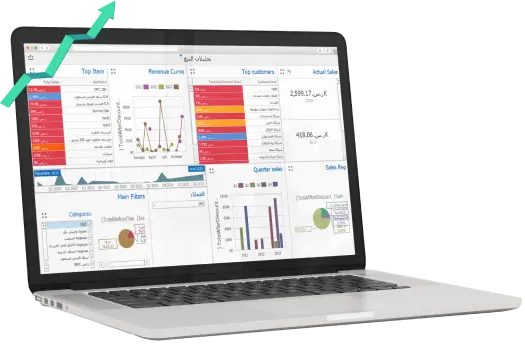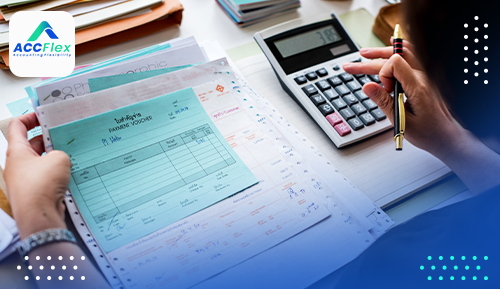One of the most important things that the finance department should at the end of the fiscal periods and in order for the income statement and the statement of financial position to be prepared in a way that reflects revenues, expenses, assets, and liabilities, called adjusting entries must be prepared so that each accounting period is allocated to revenues and expenses related to it so that the financial statements are prepared properly about the company's financial position and therefore adjusting entries are being prepared
Types of Adjusting Entries
Adjusting entries are divided into types
Prepaid Expense – expenses paid but not yet incurred
Deferred Income – income received but not yet earned
Accrued Income – income earned but not yet received
Accrued Expense – expenses incurred but not yet paid
Doubtful Accounts or Bad Debts, and other allowances
Inventory adjustments
Depreciation
First, the adjusting entries related to deferred income and prepaid expense
Prepaid Expense
The basic idea is that any fiscal period must be allocated to all its revenues and expenses for this fiscal period and in practical reality when the company pays a prepaid rent for a year or six months, for example, for rented exhibitions or its factory, let say, it paid in October of 120,000 factory rent for a year
In this case, the amount was paid in October, but the expense is pertaining a portion of this year and a portion of the next year, and the accounting treatment is as follows:
When paying the rent, the journal entry is as follows:
| Account | Debit | Credit |
| Prepaid Rent Expense | 120,000 | |
| Cash/ Bank | 120,000 |
A journal entry will be created on December 31 to allocate this year for pertain rent, which is 30,000 pounds (10,000 x 3). The 3 months are October, November, and December
The journal entry is as follows:
| Account | Debit | Credit |
| Rent Expense | 30,000 | |
| Prepaid Rent Expense | 30,000 |
Thus, this year, its portion of the rent was allocated, and the balance of the prepaid rent expense became 90000 (120000-30000), it is a current asset within other debit balances, and in the next year, this account is adjusted and the journal entry is as follows:
| Account | Debit | Credit |
| Rent Expense | 90,000 | |
| Prepaid Rent Expense | 90,000 |
It is the same idea in all payments pertain to more than one fiscal period and are created in the same manner and the best of course from an accounting point of view and according to the standards when the company prepares a monthly statement of financial position that the adjusting entries is created monthly rather than annually, and some in small enterprises create it annually, accounts payable accountant or general accountant must have an analysis of all prepaid expenses accounts and analyzes of this sub-account.
Deferred Income
Deferred income is revenues not resulting from the main activity of the company (sales), which is revenues from third party renting the company's warehouses, for example, or any other income other than the company's activity, the idea also is that the company will rent land and warehouses to the customer for a year, for example, at 600,000 pounds for the period from 1-7-2018 to 30-6-2019, and the company received upon signing the contract of 400,000 pounds and the rest of the amount in the next year
Upon receiving the amount, the journal entry is as follows:
| Account | Debit | Credit |
| Bank | 400,000 | |
| Unearned Revenue | 400,000 |
The contract value is 600,000 for a year, so the one month 50,000 pounds, and during this current year, the number of months from 1-7 until the end of the year is 6 months, and the revenue that will be allocated for this period 300,000 (50,000 x 6)
The journal entry is as follows:
| Account | Debit | Credit |
| Unearned Revenue | 300,000 | |
| Revenue | 300,000 |
The balance of Dr. unearned revenue is equal to 100000 (400000 -300000) and this account appears in the other credit balances in current liabilities and Cr. revenue appears within the income statement and in the next year a journal entry is created to adjust the remaining amount and the journal entry is as follows:
| Account | Debit | Credit |
| Unearned Revenue | 100,000 | |
| Revenue | 100,000 |
When collecting the rest of the rent amount, which is 200,000 (400000 -200000), the journal entry is as follows:
| Account | Debit | Credit |
| Bank | 200,000 | |
| Revenue | 200,000 |
The basic idea is to allocate the accounting period with the value of the revenue for that period, whether it was collected or even not collected.
Second, the adjusting entries related to accrued income and accrued expense
Accrued Expense
The idea of accrued expenses is that each fiscal period must be allocated with pertaining expenses, which are in the form of services obtained by the company and whose value has not been paid until the date of preparing the financial statements, for example (accrued rent, accrued salaries, utilities expense, etc.)
On 12/1/2015, the Eastern Company rented a property to Al-Ahly Real Estate Investment Company of 120,000 EGP annually, and not paying from Alexandria Company for Real Estate Investment until the end of 2015:
The value of the rent is 120,000 for a year starting from December 1st, 2015 to November 30th, 2016, and with this the value of the rent per month = 10000 (120000/12)
The accrued rent = 120000 x 1 = 10,000 pounds 12/31/2015
The books of Alexandria Company for Real Estate Investment
| Account | Debit | Credit |
| Rent Expense | 10,000 | |
| Rent Payable | 10,000 |
When it is paid in the next fiscal period, the journal entry is as follows:
| Account | Debit | Credit |
| Rent Payable | 10,000 | |
| Cash | 10,000 |
Thus, an adjusting entry is created for all the expenses that will not be paid except in the next period, or a service provider account is opened according to the company's accounting system, and the accrued rent expenses du are included in the current liabilities in the statement of financial position within the other credit balances line item.
Accrued Income
Accrued income represents the value of accrued revenues the company for other units of service provided, but their value has not been received until the date of preparing the financial statements, therefore, an adjusting entry must be prepared to adjust the value of revenues
On 7/1/2015, the Eastern Trading Company rented a property to Al-Ahly Real Estate Investment Company of 120,000 EGP annually, and no amounts were collected from Alexandria Company for Real Estate Investment until the end of 2015
Books of the Eastern Trading Company
At the end of the fiscal period on 31-12, an adjusting entry is created for the period in 2015 and since no amounts have been collected from the rental income, and the rental period in 2015 is six months from 1-7 to 31-12 and therefore the accrued revenue for that period is 60000 (the annual rent is 120000 and therefore the monthly rent is 10,000 and the number of months in the current period is 6 months)
The journal entry is as follows:
| Account | Debit | Credit |
| Accrued Receivables | 60000 | |
| Revenue | 60000 |
The accrued revenue is included in other debit balances in the current assets line item
When the company collects the rent value in the following period, the journal entry is as follows:
| Account | Debit | Credit |
| Bank | 60000 | |
| Accrued Receivables | 60000 |
Accounts Receivable Adjusting Entry
At the end of the fiscal period, the financial management makes provision for doubtful debts or the impairments of accounts receivable, and this is according to the conservatism principle, meaning that the company must take into account potential future losses as a result of the possibility of not fully collecting its debts from its customers and this clearly shows in practical reality
The accounts receivable balance that appears in the balance sheet will be the total accounts receivable balance minus the balance of impairments of accounts receivable (provision for doubtful debts)
And any company that has an accounts receivable system divides the credit period into 30, 45, 60 or 90 days
The accounts receivable department evaluates debts that is likely to be uncollected in each credit period, for example the total customer indebtedness who have a 30-day credit period and let say 5 million, and the company decided, for example, that 3% of this indebtedness is likely to be uncollected
So the impairments of accounts receivable = 5,000,000 x 3% = 150,000, taking into account the absence of a previous impairments of accounts receivable balance in the previous period
The journal entry is as follows:
| Account | Debit | Credit |
| Allowance for Doubtful Debts (Expense) | 150000 | |
| Allowance for Doubtful Debts (Balance Sheet) | 150000 |
One of the most important adjustments that made at the end of the fiscal period is the accounts receivable adjusting entry, meaning that the accounts receivable balance that is at the end of the period in the trial balance must be all indebtedness for the company of its customers and any credit balance to an accounts receivable meaning that amounts have been paid to the company and so far, the customer has not yet received his invoice and therefore, the credit balance must be closed in the customer deposits (other credit balances) and there is an analysis of customer deposits and the accounting treatment is as follows:
| Account | Debit | Credit |
| Customer Deposits | XXX | |
| Accounts Receivable (Al-Salam Company) | XXX |
In the following fiscal period, a reversing journal entry is created
| Account | Debit | Credit |
| Accounts Receivable (Al-Salam Company) | XXX | |
| Customer Deposits | XXX |
Also, in some companies accounts receivable adjusting entries, are adjusting and deducting little debt of some customers according to policy each company does not exceed LE50 or LE100 For example, according to its policy, the journal entry is as follows:
| Account | Debit | Credit |
| Discount Allowed | XXX | |
| Accounts Receivable | XXX |
At the end of each fiscal period, the accounts receivable department must reconcile with its customers to ensure the balances accuracy
Adjusting the Inventory Account
At the end of the fiscal period and after doing the annual inventory and inventory records, and knowing the increase or deficit in the inventory items, and when the company's method of inventory management is the perpetual inventory meaning that for each inventory item there is an inventory account on which the goods issue or goods receipt transactions, the inventory adjustment process is easy, which is when there will be an increase in an item and a deficiency in a certain item in the same group to which this inventory item belongs, meaning that the increase or decrease in these items is known to cause and the company’s inventory accountant in this case makes the adjustment in the accounting software in an easy way by adjusting the book quantities with the actual quantities but it is necessary to know the journal entries that result from these adjustments that are made automatically in the accounting software, and assuming that it is (a 20 mm glass cup) and there was an actual increase from the book of 5 units at a cost of 3 pounds per unit. In this case, the journal entry is as follows:
| Account | Debit | Credit |
| Inventory (5 units of a 20 mm glass cup, costing 3 pounds) | 15 | |
| Cost of goods sold | 15 |
Assuming that the item is (15 mm glass cup), the actual number was less than the book of 5 units, and the unit cost is 2 pounds. In this case, the journal entry is as follows:
| Account | Debit | Credit |
| Cost of goods sold | 10 | |
| Inventory (5 units of 15mm glass cup) | 10 |
So in the case of increasing the inventory balances, the cost of goods sold decreases and vice versa when there is a deficit in the inventory balances, the cost of goods sold increases
In the event that there is a deficit in the inventory during the inventory and the company believes that within the permissible limits as a result of the natural result of industry and trade, the accounting treatment to adjust the deficit is like the previous journal entry
But if the deficit was abnormal as a result of negligence or theft, and the company believes that the warehouse is the reason, then the inventory balances adjustment is done on the software, and the value of the deficit is allocated to those who caused it and the accounting treatment is as follows:
| Account | Debit | Credit |
| Inventory Shrinkage Expense | XXX | |
| Inventory | XXX |
The inventory is any type of inventory, whether raw materials inventory or spare parts, or finished goods inventory depending on whether it is an manufacturing and merchandising company
The basic idea of the inventory is to ensure that the book balances match the actual balances and the difference treatments according to the company’s policy and start the new fiscal period with actual balances that are matching to the book balances
The other part related to adjusting the inventory account is the idea of inventory valuation at the end of the fiscal period, as according to the IAS 2 — inventories and GAAP, the inventory must be recorded at the lower of cost or net realizable value (selling price - selling expenses)
Meaning that if the item (HHM) costs 10 pounds and its current market selling price has decreased at the end of the fiscal period and became 8, in this case the cost of the item is reduced to the lower price, which is 8, but if the selling price increases, for example, and it was 12, in this case the cost of this inventory item remains at its cost, which is 10 EGP and these comparisons are made between the cost and the net realizable value, either according to each item or according to each similar group of items, according to the company's policy
Adjusting Entries for Depreciation
The best, of course, if the company prepares monthly financial statements and has a good cost system, to prepare a monthly depreciation journal entry, but in some small companies they create an annual depreciation journal entry at the end of the fiscal period because they usually prepare financial statements only once and the fixed asset accountant has an asset record on the accounting software or on an Excel sheet showing the asset code, its nature, all its data, the date of its purchase and its annual depreciation expense according to the accounting depreciation rate of this asset according to the company's policy, as well as the balance of the accumulated depreciation of this asset, and an annual depreciation journal entry is created that includes all categories of fixed assets and each category separately and the journal entry is as follows:
| Account | Debit | Credit |
| Depreciation Expense - Buildings | XXX | |
| Depreciation Expense - Machinery | XXX | |
| Accumulated Depreciation - Buildings | XXX | |
| Accumulated Depreciation - Machinery | XXX |
Adjusting Entries for Provision
Provisions are estimates of expected liabilities to the company, but their value cannot be estimated properly and therefore the liabilities are not presented in the core of the balance sheet, but a provision is made by the expected liability value, and the company's financial management should review the provisions at the end of each fiscal period and make adjustments either by increasing or reducing the value of the provision according to the current situations when preparing the balance sheet, as well as refunding the value of the provision if there was no purpose of the provision, and one of the most common provisions that are reviewed at the end of the fiscal periods are provision for annual leave, provision for end-of-service, and provision for ticket, especially in the Gulf countries and are calculated on the Microsoft Excel, and the leave allowance is, for example, 21 days per year for each employee, and the end of the service half month for the first five years (if the employee has not completed five years in company) and month per year if the employee has completed five years in the company, and it varies according to each country and according to each company whether it is basic only or the gross includes all or some allowances
What is important is that at the end of each year the calculation is made from the date of the appointment of each employee separately, let say the accountant, Saeed Gamal, was appointed on 1-7-2017 at a salary of 5000 SAR and at the end of the year, the provision for leave will be calculated and adjusted, meaning that the employee spent 180 days in the company during this year
To calculate the provision for leave for the employee - Saeed Gamal, it is as follows
5000 x (21/30) x 180/360 = 1750 SAR
The journal entry is as follows:
| Account | Debit | Credit |
| Annual Leave Allowance | 1750 | |
| Provision for Annual Leave | 1750 |
The same applies to end-of-service allowances, which are calculated on 15 days instead of 21 days, or according to the company's system and labor law by country
To calculate the end of service allowance for the employee - Saeed Gamal, it is as follows
5000 x (15/30) x 180/360 = 1250 SAR
The journal entry is as follows:
| Account | Debit | Credit |
| End of Service Allowance | 1250 | |
| Provisions for End of Service Benefits | 1250 |
Of course, each employee is creating separately in the software or the Microsoft Excel, and a journal entry is created for all employees
When paying the leave allowance benefits to the employee upon his or her leave or when the company terminates the contract, the journal entry is as follows:
| Account | Debit | Credit |
| Provision for Annual Leave | XXX | |
| Cash/Bank | XXX |
Also, at the end of the year, the value of employee allowances is adjusted annually









